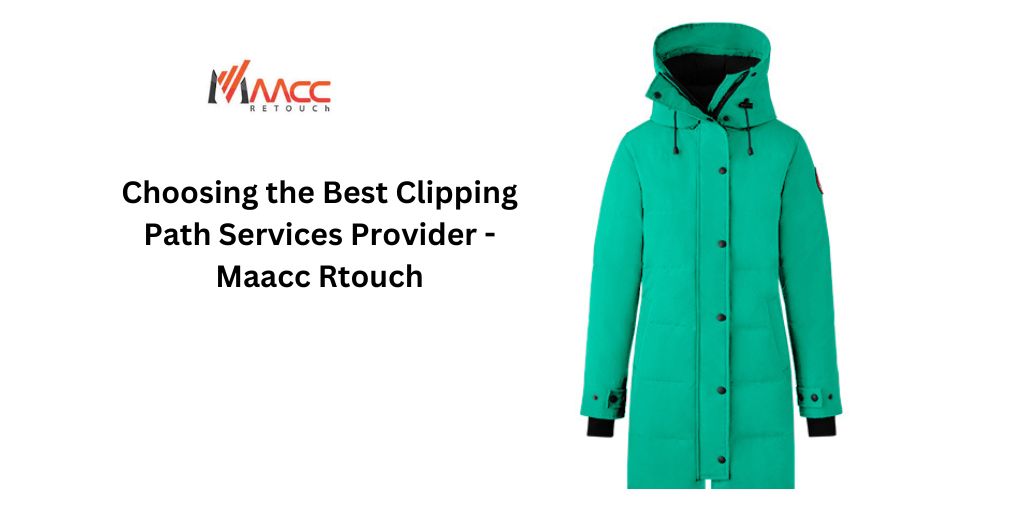Becoming an Amazon seller opens up a world of opportunities to reach a vast customer base and generate income. To embark on this journey, understanding the process is crucial. This article provides an overview of the steps involved in becoming an Amazon seller. From registration and product sourcing to optimizing listings and marketing strategies, we will guide you through the essential aspects of starting and succeeding as an Amazon seller.
Before Start Selling On Amazon
Before you start selling on Amazon, there are a few key steps you need to take to get registered and set up properly. Here’s a guide on how to register, what you need to get started, and selecting the appropriate selling plan:
1. Registering as an Amazon Seller
Visit the Amazon Seller Central website and click on the “Register Now” button. You’ll need to provide your business information, including your name, address, and contact details. Amazon may also require additional verification documents depending on your location.
2. What You Need to Get Started
To register as an Amazon seller, you’ll need a few essential items ready:
- A valid email address for your Amazon Seller account.
- A business name and address. If you’re operating as an individual, you can use your legal name and personal address.
- A phone number where Amazon can reach you during the registration process.
- Valid credit card information is needed for account verification and payment purposes.
3. Selecting the Appropriate Selling Plan
Amazon offers two selling plans: Individual and Professional.
- Individual Plan: Suitable for sellers with a low volume of sales. There is no monthly subscription fee, but you will be charged a per-item fee for each sale.
- Professional Plan: Designed for sellers with a high volume of sales. It requires a monthly subscription fee but offers additional benefits, such as access to advanced selling tools and the ability to sell in multiple categories.
Tips to Consider Before Start Selling On Amazon
Before diving into selling on Amazon, it’s important to consider a few key tips to set yourself up for success. Here are some important factors to consider before you start selling on Amazon:
1. Research the Market
Conduct thorough market research to identify profitable product opportunities. Analyze customer demand, competition, and pricing trends to find a niche that aligns with your business goals.
2. Understand Amazon's Policies
Familiarize yourself with Amazon’s rules and policies for sellers. This includes guidelines on product listings, customer service, shipping, and returns. Compliance with these policies is crucial to maintain good standing and avoid potential account issues.
3. Develop a Competitive Pricing Strategy
Price your products competitively to attract customers and stand out from competitors. Consider factors such as production costs, fees, and market trends when determining your pricing strategy.
4. Create High-Quality Product Listings
Invest time and effort in creating compelling product listings. Use clear and engaging product descriptions, high-resolution images, and relevant keywords to optimize your listings for search visibility and conversion.
5. Plan for Inventory Management
Take into account the logistics of managing and replenishing your inventory. Consider factors such as storage space, production lead times, and forecasting demand to ensure you have adequate stock to fulfill orders.
6. Optimize Fulfillment Methods
Decide whether to utilize Amazon’s FBA (Fulfillment by Amazon) or handle fulfillment yourself (FBM – Fulfillment by Merchant). Analyze the pros and cons of each option based on your business model, size, and resources.
7. Invest in Marketing and Promotion
Develop a marketing strategy to increase visibility and drive sales. Utilize Amazon Advertising, social media marketing, influencer collaborations, and other promotional tactics to reach your target audience.
8. Provide Excellent Customer Service
Prioritize exceptional customer service to build trust and generate positive reviews. Respond promptly to customer inquiries, address concerns, and resolve issues efficiently to ensure customer satisfaction.
9. Continuously Monitor and Optimize
Regularly track your sales performance, analyze data, and make data-driven decisions. Continuously optimize your product listings, marketing strategies, and inventory management to improve sales and profitability.
10. Stay Informed and Adapt
Keep up with industry trends, Amazon updates, and changes in customer preferences. Stay informed about new features, tools, and best practices to stay competitive and adapt your selling strategies accordingly.
By considering these tips before starting your Amazon selling journey, you’ll be better prepared to navigate the platform, maximize your sales potential, and achieve long-term success as an Amazon seller.
Get to know Seller Central
Seller Central is Amazon’s web interface that provides sellers with a comprehensive platform to manage their Amazon business. It offers a range of tools and features to handle inventory, product listings, pricing, orders, and customer interactions. Through Seller Central, sellers can create and optimize product listings, track sales performance, manage inventory levels, handle order fulfillment either through FBA or FBM, access advertising and promotional options, and monitor customer feedback.
It also provides valuable analytics and reporting to help sellers make data-driven decisions. Seller Central is a vital hub for sellers to effectively manage and grow their business on the Amazon marketplace.
Advantages of the Fulfilled by Amazon Program
The Fulfilled by Amazon (FBA) program offers numerous advantages to sellers on the Amazon marketplace. Here are some key benefits of utilizing the FBA program:
1. Prime Eligibility
Lorem ipsum dolor sit amet, consectetur adipiscing elit. Ut elit tellus, luctus nec ullamcorper mattis, pulvinar dapibus leo.
2. Fulfillment and Shipping
With FBA, Amazon takes care of the entire fulfillment process. They handle inventory storage, picking, packing, and shipping of orders, saving you time and effort. Moreover, Amazon’s advanced logistics network ensures timely and reliable delivery to customers.
3. Expanded Reach
FBA allows your products to be available for sale to customers across different Amazon marketplaces globally. This grants you access to a wider audience and potential international customers without the need for complex international shipping logistics.
3. Expanded Reach
FBA allows your products to be available for sale to customers across different Amazon marketplaces globally. This grants you access to a wider audience and potential international customers without the need for complex international shipping logistics.
4. Customer Trust and Satisfaction
FBA allows your products to be available for sale to customers across different Amazon marketplaces globally. This grants you access to a wider audience and potential international customers without the need for complex international shipping logistics.
5. Buy Box Advantage
Products fulfilled by Amazon generally have a higher chance of winning the Buy Box. The Buy Box is the prominent “Add to Cart” button on a product listing, and winning it increases visibility and the likelihood of making sales.
6. Time and Resource Savings
With FBA, you can focus on other aspects of your business, such as product sourcing, marketing, and expansion. The time saved from not having to handle packing and shipping allows you to allocate resources to growing your business.
7. Scalability and Seasonal Demand
FBA enables you to handle fluctuations in demand more effectively. During peak seasons, Amazon’s robust infrastructure can handle increased order volumes efficiently, ensuring timely fulfillment and customer satisfaction.
8. Multi-Channel Fulfillment
FBA offers multi-channel fulfillment capabilities, allowing you to fulfill orders from other sales channels, such as your own website or other marketplaces, using Amazon’s logistics network. This streamlines your operations and provides consistency in fulfillment across multiple platforms.
9. Inventory Management
FBA provides a comprehensive inventory management system. You can monitor stock levels, receive notifications for restocking, and leverage Amazon’s forecasting tools to optimize inventory management and avoid stockouts or overstocking.
10. Customer Returns and Refunds
Amazon handles customer returns and refunds for FBA orders. This simplifies the return process, and Amazon’s customer-centric policies help maintain customer satisfaction while reducing the administrative burden on sellers.
Overall, the Fulfilled by Amazon program offers sellers a wide range of advantages. It provides access to Prime customers, efficient fulfillment and shipping, increased customer trust, and the opportunity to focus on business growth. By leveraging FBA, sellers can streamline their operations, enhance customer experience, and potentially boost sales on the Amazon marketplace.
Adding your products on Amazon
Adding your products on Amazon and listing your first product is a crucial step towards launching a successful business on the platform. Here’s what you need to know and what you need to start listing products for a successful launch:
1. Product Identification
Clearly identify the products you want to list on Amazon. Ensure that you have accurate and detailed product information, including product name, brand, description, and any unique features or specifications.
2. Product Images
Prepare high-quality product images that showcase your product from different angles. Images should be clear, well-lit, and visually appealing. Follow Amazon’s guidelines for image requirements to ensure compliance.
3. Product Descriptions
Craft compelling and informative product descriptions. Highlight key features, benefits, and any unique selling points. Use relevant keywords to optimize your product listing for search visibility.
4. Product Pricing
Determine your product pricing strategy based on factors such as production costs, competition, and desired profit margins. Consider using competitive pricing to attract customers, especially when launching new products.
5. Product Categorization
Choose the most appropriate category and subcategory for your product. Proper categorization ensures that your product is displayed in relevant search results, increasing visibility to potential customers.
6. Product Variations
If your product has different variations (e.g., size, color), create product variations within your listing. This allows customers to select their preferred options and improves the overall shopping experience.
7. Inventory Management
Ensure that you have sufficient inventory to meet customer demand. Implement inventory management systems and processes to track stock levels accurately and avoid stockouts.Ensure that you have sufficient inventory to meet customer demand. Implement inventory management systems and processes to track stock levels accurately and avoid stockouts.
8. Competitive Analysis
Research and analyze competitors’ product listings to gain insights into their strategies and pricing. This information can help you position your product competitively and identify areas for differentiation.
9. Listing Optimization
Optimize your product listing for search engine optimization (SEO). Conduct keyword research to identify relevant keywords and incorporate them into your listing title, bullet points, and product description. This improves the chances of your product appearing in relevant search results.
10. Test and Launch
Before launching your product, conduct thorough testing to ensure accuracy in product information, pricing, and inventory management. Double-check your listing for any errors or missing details. Once everything is in order, launch your product and monitor its performance closely.
Remember, a successful product listing sets the foundation for a successful launch on Amazon. By following these steps and paying attention to detail, you can increase the visibility of your products, attract customers, and pave the way for a successful business on the platform.
How to Become an Amazon FBA Seller:
To become an Amazon FBA (Fulfilled by Amazon) seller:
- Create an Amazon seller account through Seller Central.
- Choose FBA as your fulfillment method.
- Source products from suppliers or create your own.
- Prepare and package your inventory according to Amazon’s guidelines.
- Create a shipping plan and send your inventory to Amazon’s fulfillment centers.
- Amazon handles storage, shipping, and customer service for your products.
- Monitor your sales, inventory, and performance using Seller Central’s reporting tools.
- Optimize your product listings for better visibility and sales.
- Consider expanding your product line and exploring international markets for growth.
- Stay informed about Amazon’s policies and best practices to ensure compliance and success as an FBA seller.
By following these steps, you can start selling on Amazon through the FBA program and leverage Amazon’s infrastructure to streamline your operations and reach a larger customer base.
Providing Excellent Customer Service
Providing excellent customer service is crucial for success as an Amazon seller. Here are some tips to deliver exceptional customer service:
- Prompt Communication: Respond to customer inquiries, messages, and feedback promptly and professionally.
- Clear and Accurate Product Information: Ensure your product listings have accurate and detailed information, including specifications, features, and sizing charts, to help customers make informed purchasing decisions.
- Fast and Reliable Shipping: Ship orders promptly and with reliable carriers to ensure timely delivery. Utilize Amazon’s FBA program for efficient and quick fulfillment.
- Hassle-Free Returns and Refunds: Make the return process easy for customers by adhering to Amazon’s return policies. Process refunds promptly and provide clear instructions for returns.
- Professional Packaging: Use appropriate packaging materials to protect products during shipping. Consider adding branded inserts or thank-you notes to enhance the customer experience.
- Personalized Customer Support: Address customer inquiries and issues with a personalized approach. Show empathy, offer solutions, and go the extra mile to exceed customer expectations.
- Proactive Order Monitoring: Keep an eye on order tracking and proactively address any potential issues, such as delayed shipments or delivery concerns, to ensure a positive customer experience.
- Monitor and Respond to Reviews: Regularly monitor and respond to customer reviews, both positive and negative. Show appreciation for positive feedback and address concerns raised in negative reviews professionally and constructively.
Remember, positive customer experiences lead to satisfied customers, repeat purchases, and positive reviews, which, in turn, contribute to your overall success as an Amazon seller. Prioritize customer satisfaction and continually strive to improve your customer service processes.
The Process And Requirements To Become An Amazon Seller:
Understanding the process and requirements to become an Amazon seller is crucial for several reasons. Firstly, it allows you to navigate the onboarding process smoothly. By familiarizing yourself with the steps involved, such as registering for an account, providing necessary information, and setting up your seller profile, you can avoid unnecessary delays or mistakes that may hinder your ability to start selling.
Secondly, understanding the requirements helps you comply with Amazon’s policies and guidelines. Each category and product type may have specific requirements and restrictions, such as safety standards, brand approval, or documentation. By being aware of these requirements, you can ensure that your products meet the necessary criteria and avoid potential issues or account suspension down the line.
Moreover, comprehending the process and requirements enables you to optimize your product listings effectively. You can learn about keyword research, product categorization, and listing optimization techniques to enhance the discoverability of your products and improve your chances of attracting potential customers.
Additionally, understanding the process and requirements allows you to plan your business strategy and operations effectively. It helps you estimate costs, forecast inventory needs, and set realistic goals for your Amazon venture. This knowledge empowers you to make informed decisions about pricing, fulfillment methods (such as FBA or FBM), and marketing strategies that align with Amazon’s guidelines and best practices.
In summary, understanding the process and requirements to become an Amazon seller is essential for a smooth onboarding experience, compliance with policies, effective listing optimization, and strategic planning. It sets the foundation for a successful and sustainable business in the Amazon marketplace.
Conclusion
Becoming an Amazon seller requires understanding the process and requirements involved. By following the necessary steps, such as creating an account, sourcing products, and optimizing listings, you can establish a successful presence on the platform. Complying with Amazon’s policies and providing excellent customer service is key to achieving long-term growth and maximizing your potential as an Amazon seller.






